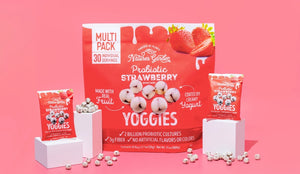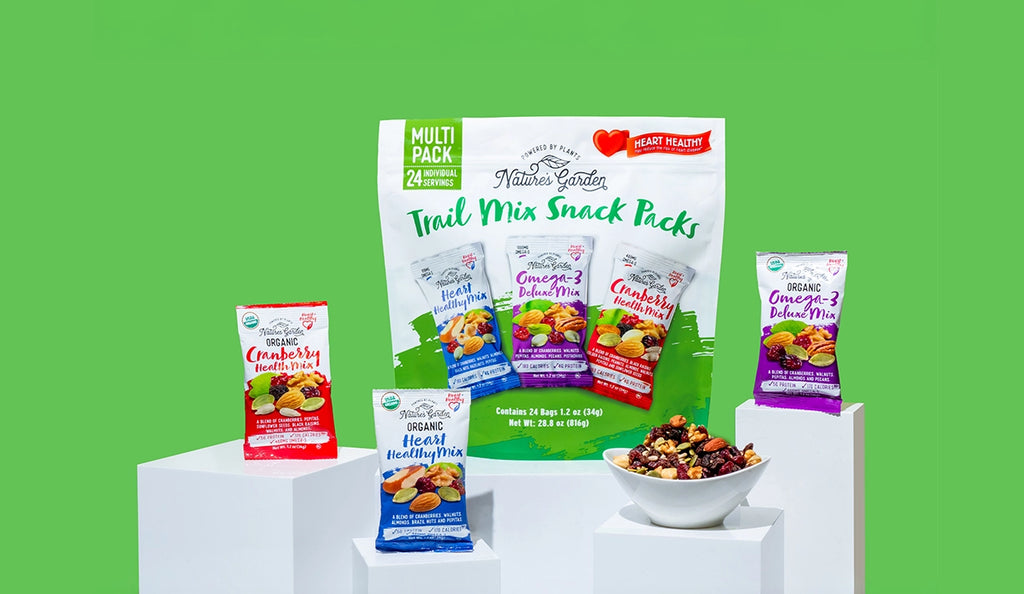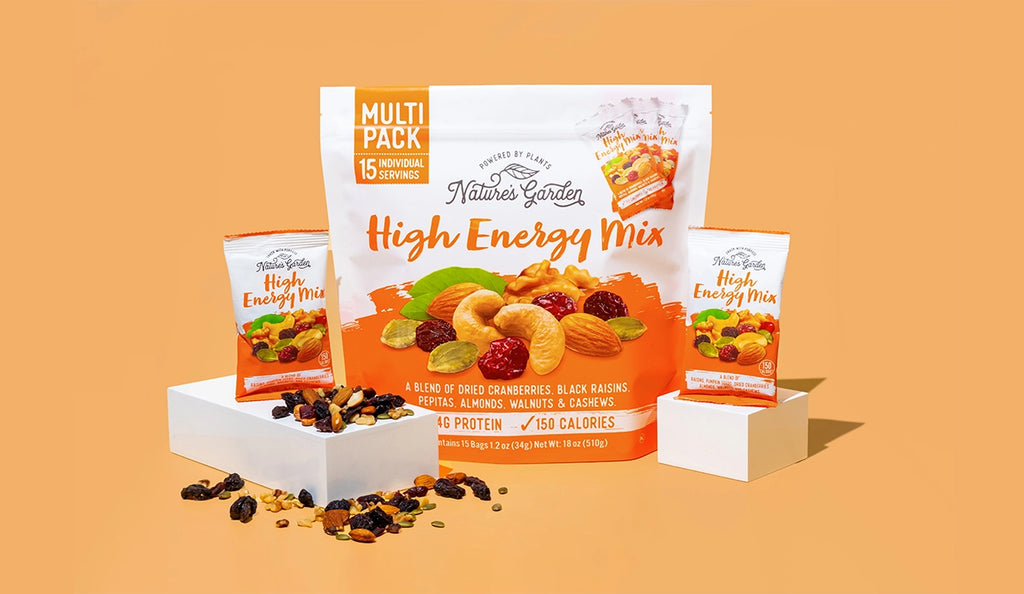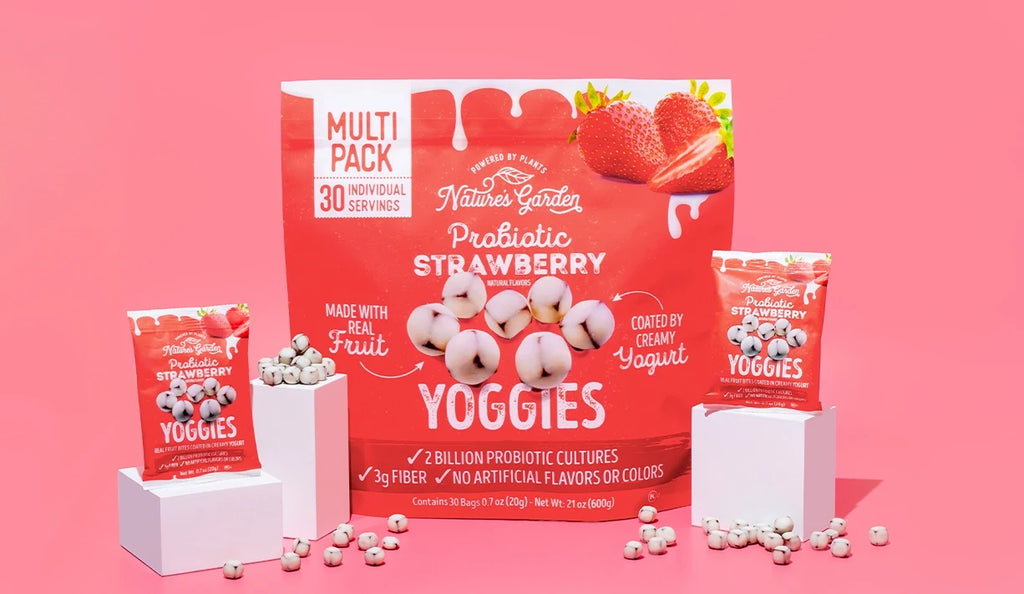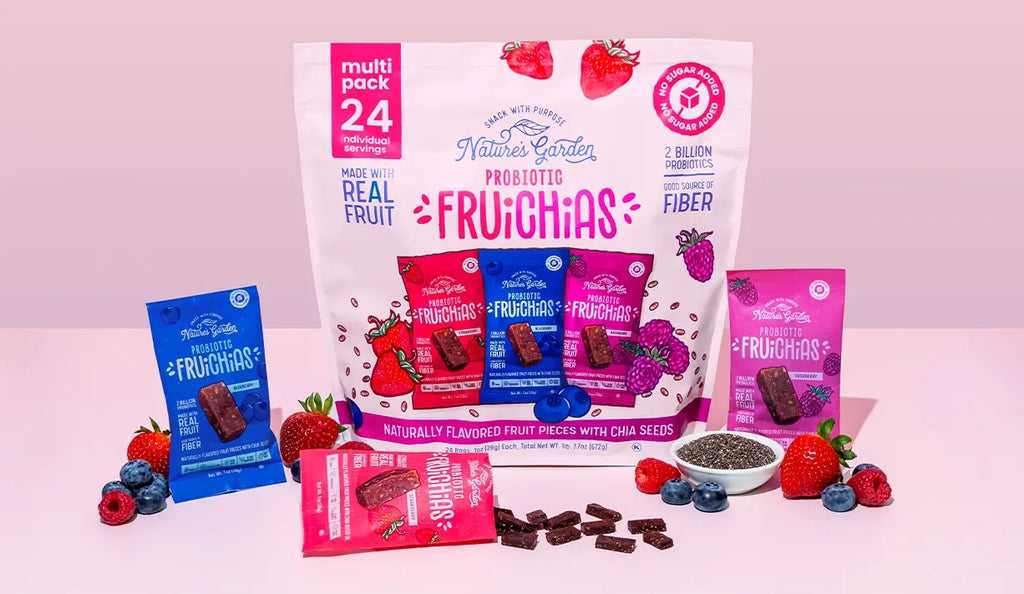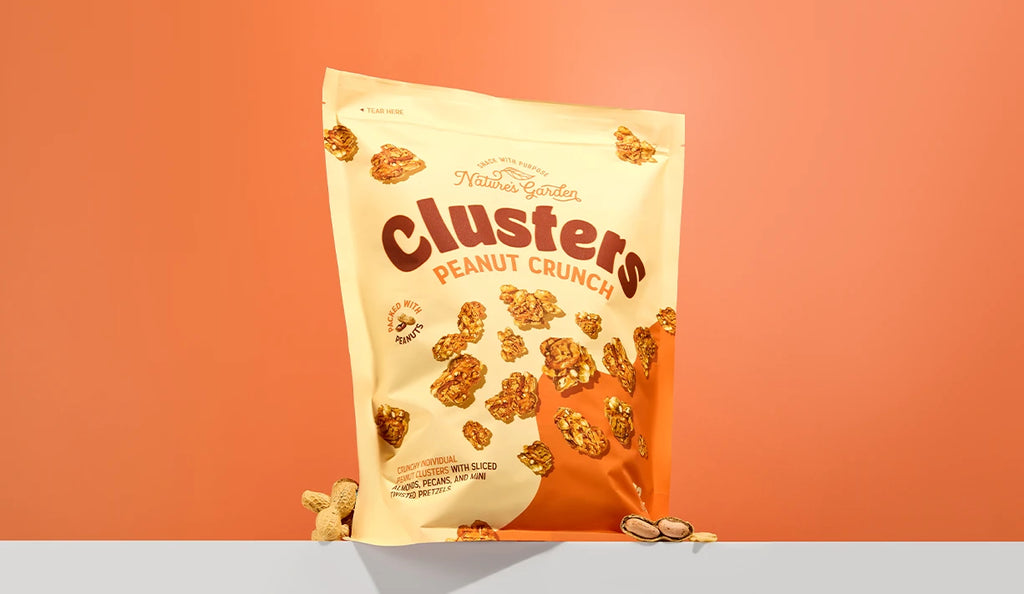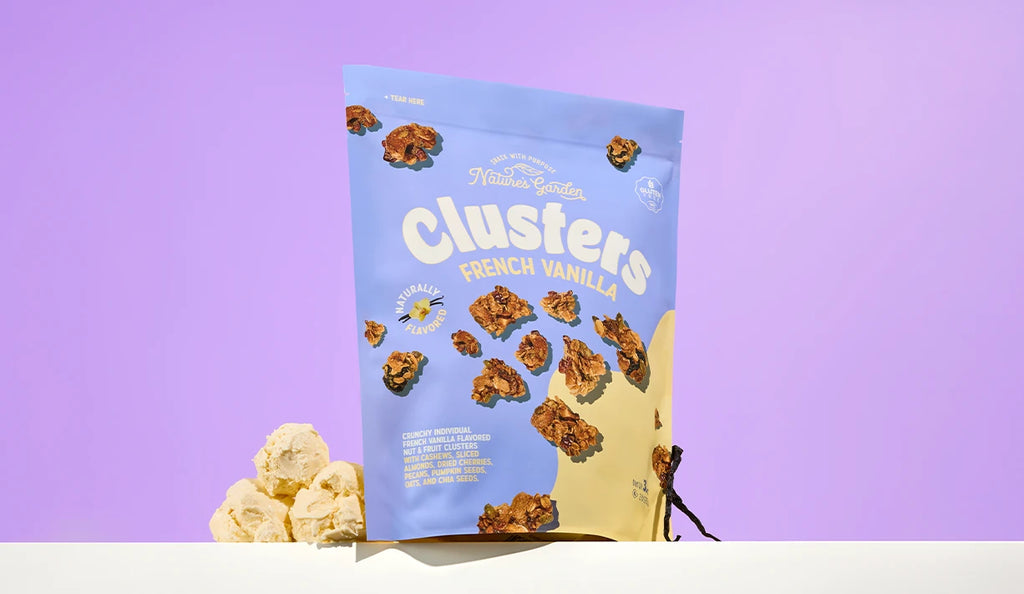From math tests to monkey bars, kids burn a lot of energy at school. By sending them off with delicious, healthy lunches, you can help ensure they're fueled, focused, and happy all day long. But finding nutritious foods that kids will eat is challenging for many parents. Real fruit snacks can be a creative solution, delivering important fiber, vitamins, and minerals in fun, bite-sized morsels.
Are Fruit Snacks Nutritious?
Dried fruit, fruit gummies, fruit leathers, and fruit purees — just because a snack has the word "fruit" in it, it's not necessarily healthy. Some brands of fruit snacks contain artificial flavorings, corn syrup, and added sugars and have little nutritional value. Be sure to read ingredient lists and nutrition labels closely so you can make mindful choices.
Healthy fruit snacks for kids, like the ones from Nature's Garden, shine with real fruit and quality, non-GMO ingredients. Our FruiChias and Yoggies, for example, are also loaded with probiotics to promote gut wellness. You can feel good about tucking our functional fruit snacks into lunches, knowing they're bursting with goodness to fuel growing, busy kids.
What Makes Fruit Snacks a Good Lunch Option?
Lunch prep isn't always easy, especially on hectic mornings. And on the days your lovingly packed lunch comes home with the fruit untouched? You're not the only parent throwing their hands up in despair.
Real fruit snacks can be a game-changer when you're packing lunches.
- They save time. Sure, some days, you're prepping lunches like a boss, cutting up apple slices or peeling oranges. Other days, the fruit isn't ripe, or you're short on time. Simplify your mornings by tossing a nutritious probiotic fruit snack in their lunch box. No need to package, portion, or stress.
- They're portable and mess-free. Maybe your kid loves bananas but not the bruises they get on the way to school. Raspberries can be a squishy mess by lunchtime. Convenient, sturdy fruit snacks survive backpacks, bags, and pockets and still taste good. You can set aside the delicate fruit for eating at home.
- Kids love 'em. Sending the same snacks every day? When lunch starts to feel dull, children are less motivated to eat. Break up the monotony by alternating fresh fruit with wholesome, colorful fruit snacks that feel like a treat.
Balanced Lunchboxes: Mixing Fruits, Proteins and Grains
Fruit snacks are just one component of a well-rounded lunch. Pair these tasty bites with other foods to ensure you've got a well-balanced meal. Protein-rich foods help keep kids full for longer, and whole-grains provide energy and fiber to support digestive health.
Offering your kids diverse flavors and textures helps expose them to new foods, making lunches more interesting and laying the foundation for healthy eating habits. Mix and match some of these lunchbox favorites:
- Fruit: Whole fruit, dried fruit, real fruit snacks, and fruit purees
- Protein: Yogurt, cottage cheese, hummus, mixed nuts, boiled eggs, cheese string, and roasted chickpeas
- Grains: Crackers, mini bagels, wraps, and sandwiches
- Extras: Veggies, juice, popcorn, oatmeal cookies, energy bites, and mini muffins
What to Look for in a Fruit Snack
Are fruit snacks healthy or pretending to be fruit? Our checklist helps you decide if a snack is lunchbox worthy.
- Real fruit. Snacks crafted with real fruit purees or dried fruit provide essential vitamins, minerals, and dietary fiber not found in processed, artificial fruit-flavored products.
- Less sugar. Lean toward nibbles with minimal added sugar. Sugar appears in ingredient lists as high-fructose corn syrup, sucrose, maltose, dextrose, rice syrup, cane sugar, honey, and molasses. Excess sugar can lead to health problems.
- Clean ingredients. Watch for artificial colors, artificial flavors, and GMO ingredients. Choose brands that take care to use simple, natural, wholesome ingredients.
- Kid-friendly portions. Fruit snacks portioned into single servings are just right for little appetites. The small pieces are easy to eat by hand and portable enough to carry to the swings or basketball court.
Nature's Garden Makes School Lunches Easy
Give your kids a nutritional boost with power-packed fruit snacks they love eating. We've curated a collection of functional snacks in different flavors and shapes, keeping lunchtime delicious and exciting.
- Our innovative Probiotic FruiChias feature a puree of real strawberries, blueberries, and raspberries mixed with crunchy chia seeds. They're made with probiotics and no added sugar for a fruit snack you can feel good about.
- Probiotic Yoggies are delectable fruit centers wrapped in yogurt. These bite-sized chews are crafted from real blueberry, strawberry, raspberry, and apple purees and are bursting with vitamins and fiber.
- For whole, dried fruit, try our Probiotic Tart Cherries or Probiotic Apricots. These super snacks have plenty of vitamin A, potassium, and dietary fiber for cheerful on-the-go snacking.
With Nature's Garden snacks stocked in your pantry, you don't have to overthink school lunches. No matter which tasty bites you reach for, you're nourishing your children with quality ingredients and irresistible flavors. Make the most of school snacks and lunches and shop our full collection of fruit snacks, trail mixes, and clusters.
